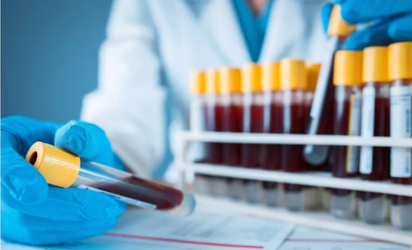
Landmark International Multi-Center Validation Study of Simoa® Neurofilament Light Blood Test
Introduction
In a significant stride towards improving the management and treatment of neurology patients, a groundbreaking study validating the analytical performance of Quanterix’s Simoa® Neurofilament Light (NfL) assay has been published1. This ultrasensitive test has demonstrated its analytical robustness and consistency across 17 testing centers located in 10 different countries in Europe and North America. The study was sponsored by Quanterix and led by Professor Jens Kuhle of the University Hospital Basel, Switzerland, and explores the precision, sensitivity, and reliability of the NfL blood test, focusing on its ability to measure minute changes in NfL levels in individual multiple sclerosis (MS) patients undergoing disease-modifying therapy.
The Significance of Multi-Center Validation
Serum NfL testing has gained substantial recognition as a clinically useful tool in the field of neurology. The publication of this study is a significant milestone needed to understand the analytical characteristics of the widely used Simoa® NfL test, particularly concerning the precision and consistency of results in different laboratories.
The remarkable findings from this study, where coefficients of variance (CV) were found to be less than 7.2% for each of three serum-based controls across all 17 testing centers. Moreover, nine serum proficiency samples, obtained from both healthy donors and individual MS patients, displayed remarkable consistency across laboratories, with an overall CV of 9.4% across all samples and sites. This level of consistency suggests that results from individual serum donors were almost identical, regardless of the testing center. Additionally, the test exhibited the ability to reliably measure changes in NfL that exceeded analytical and biological variation in a majority of MS patients undergoing fingolimod therapy after just three months.
Setting the Stage for Clinical Applications
The study, titled “Development and multi-center validation of a fully automated digital immunoassay for neurofilament light chain: toward a clinical blood test for neuronal injury,” is scheduled to be published in the upcoming issue 3 of Clinical Chemistry and Laboratory Medicine. The study represents a comprehensive validation conducted across real-world laboratory settings in 10 different countries, highlighting the test’s versatility and reliability.
The paper delves into various aspects of the assay, including its design, reagent development, multi-site protocol, and performance characteristics. It specifically discusses linearity, limits of detection and quantification, reproducibility, and the correlation between serum and plasma measurements. Such in-depth analysis serves to establish the performance characteristics that help us understand the capabilities and analytical limits of the NfL blood test for clinical applications. One of the key takeaways from this study is the recognition of serum NfL measurements as a valuable tool for individual patient monitoring. Achieving high analytical precision is essential to minimize the contribution of test variation when combined with biological variation, ultimately determining the clinical significance of changes in NfL levels.
The Role of NfL in Therapeutic Trials and Drug Efficacy Monitoring
The FDA’s recent approval of tofersen, largely based on serum NfL results, underscores the growing importance of this biomarker in therapeutic trials and drug efficacy monitoring. This milestone study comes shortly after the publication of another international study by Professor Kuhle’s team, which established Simoa® NfL serum reference ranges in children. This complements a previous extensive reference range study on adults led by Professor Kuhle. Together, these reference databases and the rigorous international validation of the test further establishes the Simoa® NfL assay as the gold standard for blood measurement of this important biomarker, and as a potential surrogate indicator of neurology drug efficacy in clinical trials.
Conclusion
The publication of this landmark study showcases the immense potential of the Simoa® NfL assay in revolutionizing the management and treatment of neurology patients. The study’s findings emphasize the test’s analytical robustness, precision, and consistency across a multitude of testing centers worldwide. The ability to monitor neurological patients on drug therapy with such precision holds the promise of improving patient care and drug development in the field of neurology.
With NfL testing taking center stage in therapeutic trials and drug efficacy monitoring, the healthcare industry can look forward to more effective treatments and interventions for neurology patients. Quanterix continues to make significant strides in ultrasensitive biomarker detection, propelling scientific discovery and healthcare breakthroughs to new heights.
References
Wilson D, Chan D, Chang L, et al. Development and multi-center validation of a fully automated digital immunoassay for neurofilament light chain: toward a clinical blood test for neuronal injury [published online ahead of print, 2023 Sep 13]. Clin Chem Lab Med. 2023;10.1515/cclm-2023-0518. doi:10.1515/cclm-2023-0518